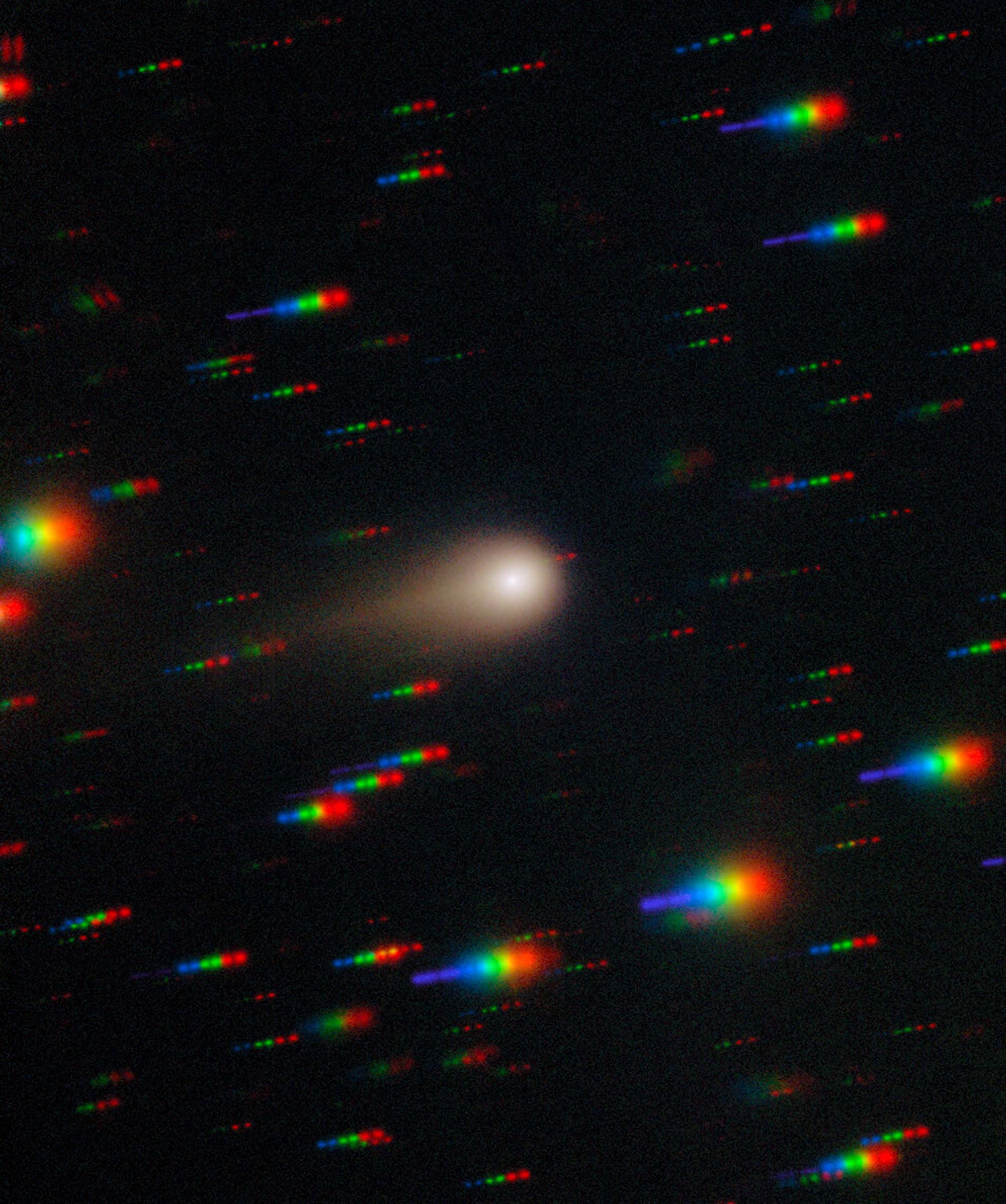Gemini South Captures Growing Tail of Interstellar Comet 3I/ATLAS During Educational Observing Program

Astronomers and students working together through a unique educational initiative have obtained a striking new image of the growing tail of interstellar Comet 3I/ATLAS. The observations reveal a prominent tail and glowing coma from this rare celestial visitor, while also providing new scientific measurements of its colors and composition.
On 27 August 2025, researchers used the Gemini Multi-Object Spectrograph (GMOS) on Gemini South at Cerro Pachón in Chile to obtain deep, multi-color images of interstellar comet Comet 3I/ATLAS. Gemini South is one half of the International Gemini Observatory, partly funded by the U.S. National Science Foundation (NSF) and operated by NSF NOIRLab.
These observations were taken as part of a public outreach initiative organized by NSF NOIRLab in collaboration with Shadow the Scientists, an initiative created to connect the public with scientists to engage in authentic scientific experiments, such as astronomy observing experiences on world-class telescopes [1]. The scientific program was led by Karen Meech, astronomer at the University of Hawai‘i Institute for Astronomy (UH IfA) [2].
In the images captured during the session [3], the comet displays a broad coma — a cloud of gas and dust that forms around the comet’s icy nucleus as it gets closer to the Sun — and a tail spanning about 1/120th of a degree in the sky (where one degree is about the width of a pinky finger on an outstretched arm) and pointing away from the Sun. These features are significantly more extended than they appeared in earlier images of the comet, showing that 3I/ATLAS has become more active as it travels through the inner Solar System.
Members of the public, including students from Hawai‘i and La Serena, Chile, were invited to remotely join the Gemini South control room in a special two-hour Zoom session where they could interact directly with astronomers, ask questions about interstellar cometary science, and follow the progress of the observations in real time. The event was followed across the world with people joining from Europe, New Zealand, and South America.
More than just capturing stunning images, the main scientific motivation of the observing session was to collect the comet’s spectrum, which refers to the wavelengths of light that it emits. A spectrum can tell scientists information about the comet’s composition and chemistry, which allows them to understand how the comet changes as it passes through the Solar System.
